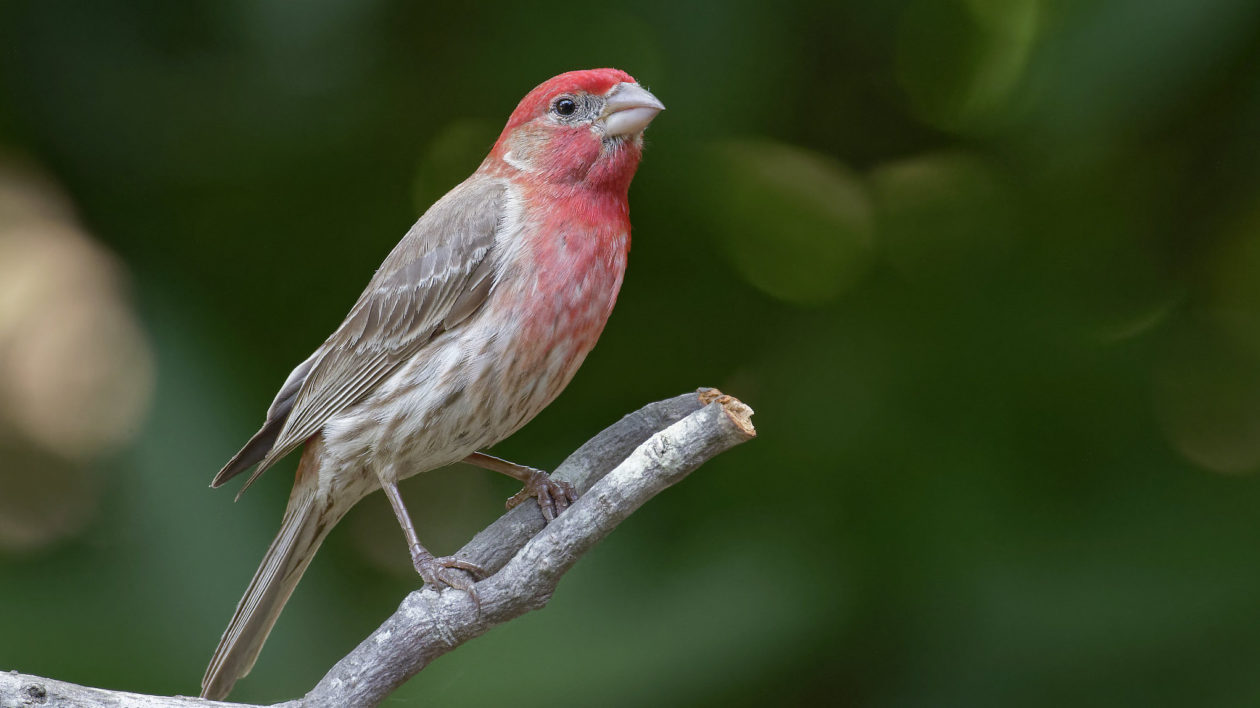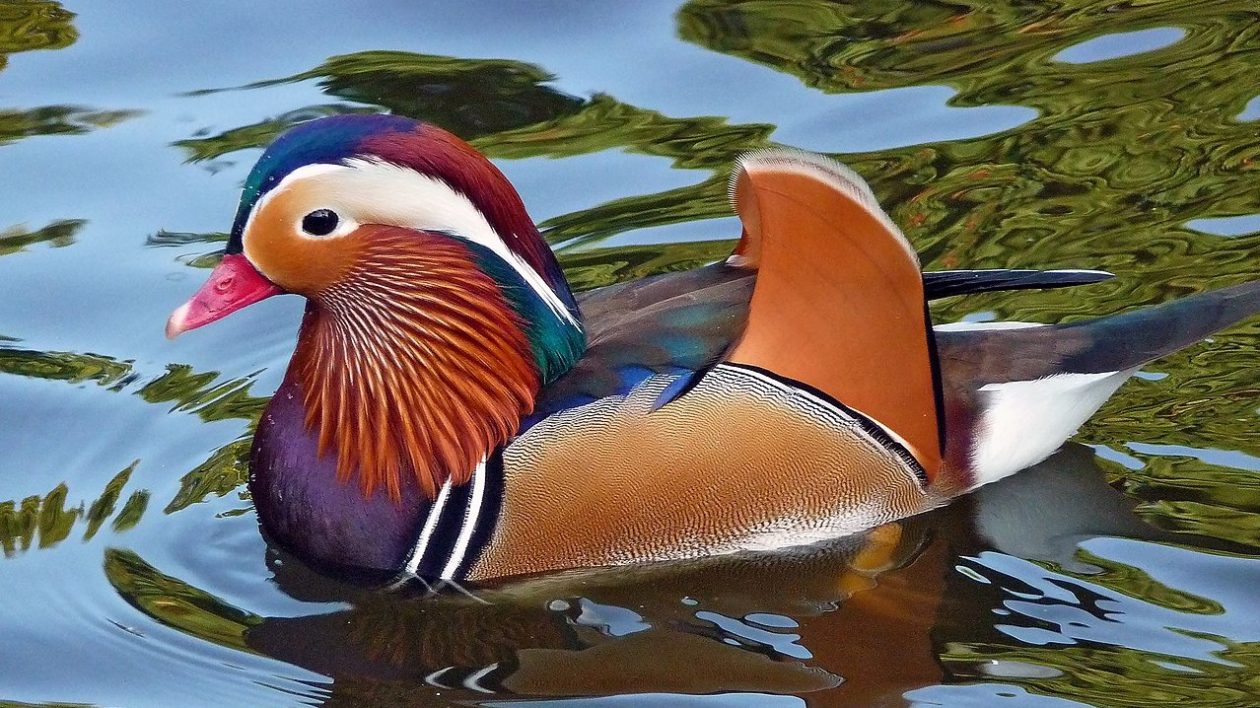Last winter, I glanced out my home office window and saw a small bird go darting by. My first thought: Hummingbird! My second thought: It couldn’t be. A hummingbird on a cold, dreary day in Boise, Idaho? No way.
But then I saw it again, and again. And it turns out, it wasn’t just me. Others around Boise were reporting sightings of Anna’s hummingbirds. More and more hummingbirds, it turns out, are spending winters in Idaho – likely due to a combination of warmer winters and more people feeding them.
I keep a close eye on the backyard birds. I remember when I first saw a Eurasian collared dove in the neighborhood. My perception is that Cooper’s hawks have increased. Maybe you’ve noticed a strange bird at the feeder this year, or believe you see some trends.
It’s probably not just you. In fact, thanks to citizen science birding efforts, there’s a remarkable dataset of backyard bird trends. Backyard birders have helped researchers track range expansions and other changes around the world.
Some of our most popular stories on Cool Green Science have been about these changes. Here, we present a round-up of birds and phenomena you may be noticing at your feeder.

Hummingbirds in Winter
There’s long been a myth that keeping up your feeder will delay hummingbird migration, potentially harming these little birds. Instead, many experts recommend maintaining hummingbird feeders for at least 2 weeks after you’ve seen the last one in your yard.
And many people are keeping up their feeders year round. There are stragglers, and some species may stick around all winter. Read more about the hummingbirds you may see in winter.
Robins in Winter
It’s a sign of spring! At least, that’s what I so often heard. And yet, many of us see robins all winter long. For some, that causes concern. We receive dozens of questions about this from concerned readers every year.
In this case, many robins don’t migrate at all. They have different habits, and often use different habitats, but they’re still around. Read more.
Why You’re Hearing Great-Horned Owls
We think of spring as the time when birds set up nests. That’s mostly true. But not for great-horned owls.
Now is the time to enjoy the great horned owl breeding season – a time when these charismatic birds are much easier to see and hear. It’s the hooting season.
Don a winter cap and head out to your local park or walking trail to enjoy one of the season’s coolest spectacles. Here’s what you need for your next owl outing.

More Hawks at Your Birdfeeder
In the 1990s, Cooper’s and sharp-shinned hawks occupied 26 percent of suitable habitat around Chicago. Two decades later, they occupied close to 67 percent of sites.
It’s a trend reported (often via citizen science) around the country. It’s not just you: you really are seeing more hawks at your feeder. And a big part of it is the bird feeder in your backyard. The bird seed is feeding the songbirds, and those songbirds are feeding the hawks. Read more about this study.
Snow Birds
Winter is sometimes consider the off-season for U.S. birders. But it’s also a great time to pick up some new lifers. There are birds that are almost exclusively seen in winter.
From snow buntings to Bohemian waxwings, check out our list of the ten best birds to look for this winter.

Eurasian Collared Doves
I noted the first Eurasian collared dove in my backyard in 2008. Today, they’re ubiquitous. Several pairs nest here every year. The Great Backyard Bird Count, a citizen science effort held every February, has tracked this trend nationwide.
In 1998, this non-native species was documented in Florida and a few other states. And then it spread rapidly across the United States. Have you seen this bird?
Cardinals Move North
The northern cardinal is one of the most recognized and beloved birds in North America – and more people can see them now than ever, as their range has expanded steadily north over the past 100 years.
The northern cardinal’s spread north has been documented for decades. A 1960 report noted that cardinals first nested in southern Connecticut around 1943, and in eastern Massachusetts in 1958. It also noted that the bird became firmly established in parts of New York, and that its populations increased in northeast Pennsylvania and New Jersey.
The northern cardinal has continued its spread. Over the past 30 years, it has become a resident bird in Northern Minnesota, Maine and southern Canada. This spread has been well-documented thanks to Project FeederWatch, a citizen science program of the Cornell Lab of Ornithology. Read more.

Eastern Blue Jays Move West
Recent news coverage has reported on the massive declines in North American bird populations over the past few decades. But blue jays are a rare positive story: Their numbers increased 28 percent between 1966 and 2015.
Blue jays have been year-round residents from the eastern United States and Canada to the Great Plains. They are increasingly showing up in the winter in the northwestern United States, where they were rare to non-existent prior to 1972. Read more.
Fewer House Sparrows?
House sparrows are not favorites of U.S. birders. They’re non-native. They compete with other songbirds. They’re often messy.
Given all that, it seems odd to be writing this: House sparrow populations have been declining worldwide, including in their native range.
House sparrows are often considered one of the most adaptable birds, capable of thriving amongst our farms, suburbs and cities. The real story of their spread and decline is a bit more complex, and may have implications for urban conservation. Are you seeing fewer house sparrows?

House Finch in Your Hanging Plant
Unlike house sparrows, house finches are generally enjoyed by bird feeding enthusiasts. However, the house finches are also non-native over much of North America. They were imported to the eastern United States as cage birds (rebranded as “Hollywood finches”). As is so often the case, some were released and quickly established themselves.
They may be familiar, but the house finch is full of surprises. One of the keys to success is their adaptability. They may even nest in your house plants. Learn more.
About That Weird Duck…
Say you’re out for a bit of winter birding at the local nature reserve. You’ve been seeing some interesting waterfowl species in the wetlands, and you hope to add some new ones to the list. You’re ready: binoculars in hand, the duck pages in your field guide bookmarked for easy access. You know how to tell a gadwall from a hen mallard, a greater scaup from a ring-necked duck. You’re feeling good about your duck-spotting credentials.
And then, as you eye up the nearest flock, you see something…wacky. A duck that looks vaguely familiar, but with black and white markings, and a big tuft on its head. It’s not in the field guide. It’s not in your birding app. What is this thing? We’re here to help.

Or Is It A Chicken?
Ducks aren’t the only birds that escape captivity and make a life in the wild. In fact, many species of domestic fowl now have established feral populations.
You never know what might show up at a city park. Guinea fowl, peafowl, exotic pheasants or even feral chickens are all possibilities. So if you see something really weird, don’t rule out barnyard origins. Read more about domestic fowl gone wild.
Or A Parrot?
Seeing a peacock might get your attention. Seeing a parrot in the United States? No, you’re not hallucinating.
As some birders and sharp-eyed observers already know, the US is home to dozens of feral parrot species. Using data from eBird and the Christmas Bird Count, scientists recently tallied 56 different parrot species sighted in 43 states, 25 of which are now breeding in the wild across 23 different states.
How do you identify them? Our field guide to feral parrots can get you started.

Turkeys About Town
The reintroduction of wild turkeys is a dramatic wildlife conservation success story. In the early 1900s, wild turkeys had disappeared across much of their range. Today, they’re thriving. And some have moved from the woods to your neighborhood.
This a new wild turkey for many of us: one at home among people. This turkey tears up farm fields and backyards. It is bold and aggressive, strutting down suburban streets without fear.
And sometimes, lately, it even attacks us.

Surprises
One of the great joys of birding – and bird feeding – is you never know what you might see. Surprises abound. Each winter, for instance, some northern rarities suddenly begin appearing at suburban feeders.
Every winter, birders wonder: will this be one of those years? One of those years when snowy owls dot the windswept landscape and our woods are filled with saw-whet owls.
Or one of those years when our feeders are inundated with northern seed-eating songbirds like purple finch, red-breasted nuthatch, evening grosbeak and redpoll.
These birds only occasionally descend in large numbers from their boreal and arctic nesting grounds to more southern latitudes where most of us live. Here’s a guide to northern birds that might show up in any given year.
Now, get our your binoculars or take a walk outside. Let us know the surprises you see. It might even give us an idea for a future story.
-
Hummingbirds in Winter
There’s long been a myth that keeping up your feeder will delay hummingbird migration, potentially harming these little birds. Instead, many experts recommend maintaining hummingbird feeders for at least 2 weeks after you’ve seen the last one in your yard.
And many people are keeping up their feeders year round. There are stragglers, and some species may stick around all winter. Read more about the hummingbirds you may see in winter.




We have had a Swinhoe at our feeders all summer and right up to today. He cannot fly – his wings have been trimmed. But, he’s also NOT what I would call domestic because I cannot get anywhere near him. It was QUITE SHOCKING the first time we saw him, but now that he’s around all the time, he’s become “a bird in our yard.” I have a feeling he’s someone’s pet. I was thinking about catching him in a “Hav-a-Heart” trap and taking him around the neighborhood. We live way out in the country….mostly forests and rivers. Thoughts?
I’ve had a group of 6 Eastern Bluebirds at my heated birdbath this winter for the first time in 15 years. They come several times a day but not every day. I love to see them but what could they be eating and how are they surviving our cold temps? Located in Hudson, Wisconsin.
Not much of a comment but very interesting article.
thank you.
It’s OK to have hummingbird feeders out all winter in cold climates, but there must be solid discipline on the part of the home owner to ALWAYS keep them from freezing and to clear the snow from the feeding dish often during the day of EVERY storm. You’ll need to bring them in at night and have them out at the crack of dawn every morning. That’s a lot to promise. Otherwise what is being done is luring them to starve to death during an extended snowstorm or cold snap, or while your on vacation. If you can’t guarantee feeder upkeep, don’t do it.